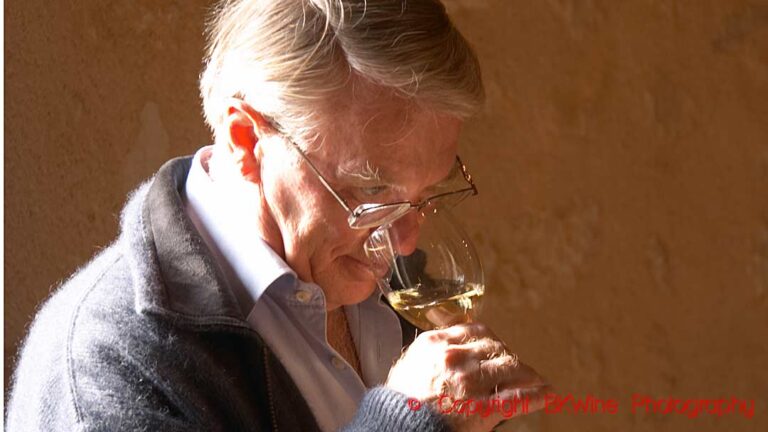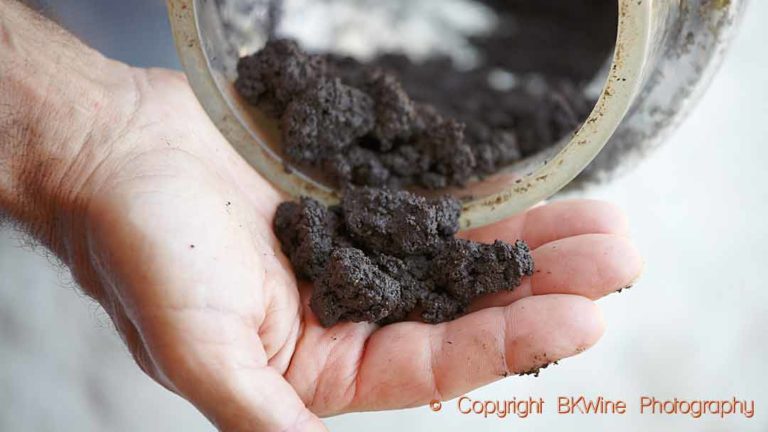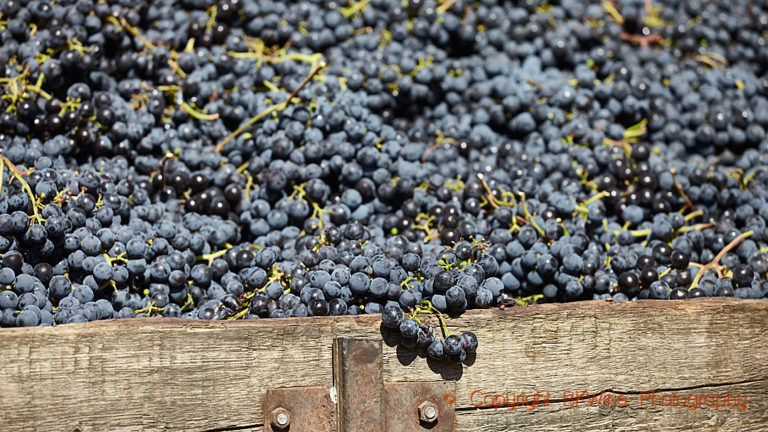A video explanation on how sparkling wine is made
Many better sparkling wines have a second fermentation in the bottle. It is this second fermentation in the bottle that makes the wine bubbly. This is the method known as “the traditional method” methode traditionnelle. In the past it was called “champagne method” but the champagne producers did not like that others used that term so they managed to get it banned.
Fermenting a second time in the bottle is often considered to make a better or more characterful wine. But of course, also a second fermentation in tank can make a good wine. Cava, Franciacorta and Champagne are some of the appellations that stipulate that the second fermentation take place in the bottle. In some areas it is optional, and the choice is then one of style.
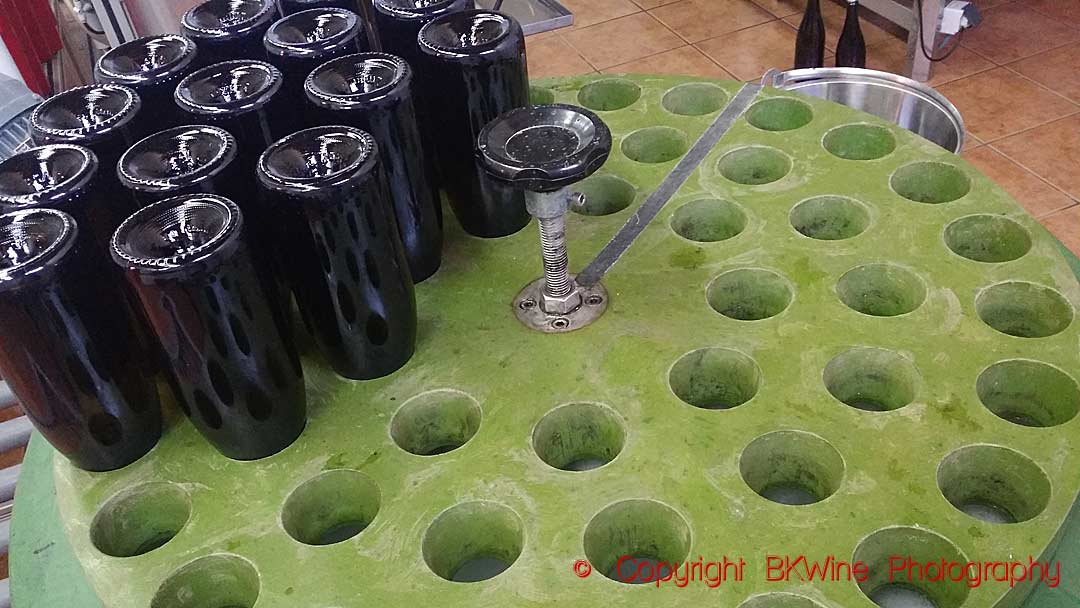
But the result of fermentation is inevitably that there is a sediment of dead yeast cells. This cannot be left in the bottle when selling it to the consumer. (However, lately some trendy, or gimmick-prone, producers of sparkling wine have started to sell bottles with lees left in the bottle, sometimes including complex instructions on how to open the bottle under water…)
So you have to remove the lees before selling bottle. This is done in two steps:
- Remuage – when by slowly shaking and turning the bottle, the lees end up on the cork, with the bottle standing upside down on the cork. Usually done automatically with gyropalettes.
- Dégorgement, or disgorging – removing the cork and sediment and inserting a new cork, the final cork.
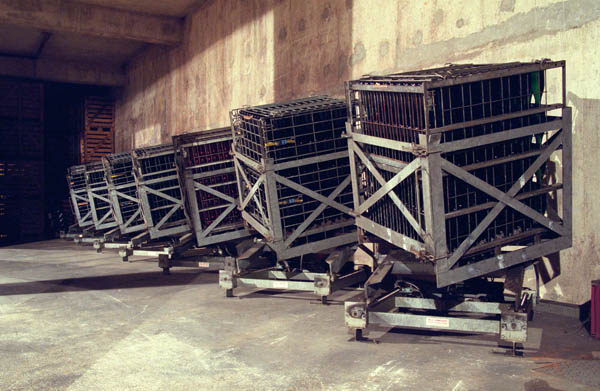
In the past, disgorging was made by hand, today it is fully automated. There are some who still do it by hand, but not many.
This is how disgorging is done:
The bottle is upside down, with the neck downwards and with the lees resting on the cork. It is put in a cooling bath. The cooling bath is around -26-27 degrees Celsius.
It is only the neck of the bottle that is in the cooling bath. You let it stand like that for a few minutes, long enough for a little ice plug to form in the neck of the bottle. The ice plug “captures” the lees.
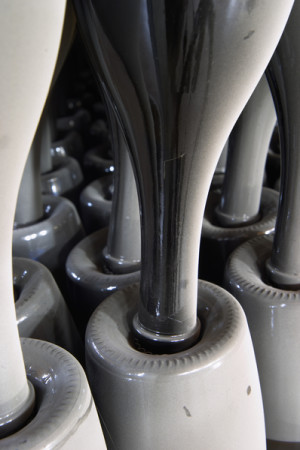
You then turn the bottle to the upright position and take off the cork. Or more accurately, take off the crown cap. The bottle is almost always closed with a standard crown cap (old style beer bottle cap) during the second fermentation.
When the cap is removed the small ice plug shoots out of the neck and takes the yeast lees with it.
You then fill the bottle so that it is completely filled. You fill either with just wine, or with a mixture of wine and liqueur d’expedition. Liqueur d’expedition is sugar mixed with wine. It is also called dosage. Depending on how much sugar you put in the sparkling wine becomes more or less sweet. If no sugar is added it becomes what we call brut nature.
The filling is actually a little bit more complicated than that. Watch the video below for a more detailed explanation.
Then you put the final cork in and put on the wire cage, le muselet.
If the wine is to be sold immediately then you also put on the label and neck foil. Otherwise, you put the bottle “naked” in the cellar and put on the label only when it is sold.
These are the sweetness categories (the terms are the same for Champagne and all other sparkling wines in the EU):
- Brut nature, dosage zéro, pas dosé: no added sugar, i.e. no dosage, and no more than 3 grams of residual sugar
- Extra brut: 0-6 grams of sugar
- Brut: 0-12 grams sugar
- Extra dry: between 12 and 17 grams of sugar
- Sec: between 17 and 32 grams of sugar
- Demi sec: between 32 and 50 grams of sugar
- Doux> 50 grams sugar
(Sometimes you will see different figures quoted, but that is obsolete information.)
Here you can see the process of how disgorging is done. In this case it is at a relatively small producer, Champagne de Sousa in Avize.
Here you can see how it is done by hand. This is from a winery visit at a producer in Catalonia, Wine Art, where we had a half-day session on a wine tour on “make your own cava”.
—
Seeing this first hand in the cellar gives you a better understanding of how it is done. Come on a wine tour to Champagne to see the magnificent cellars (although one can never be sure to see the disgorgement, since they only do it once in a while).
Travel to the world’s wine regions with the wine experts and the wine tour specialist.
Wine tours to the most exciting bubbly. BKWine wine tours.
—


